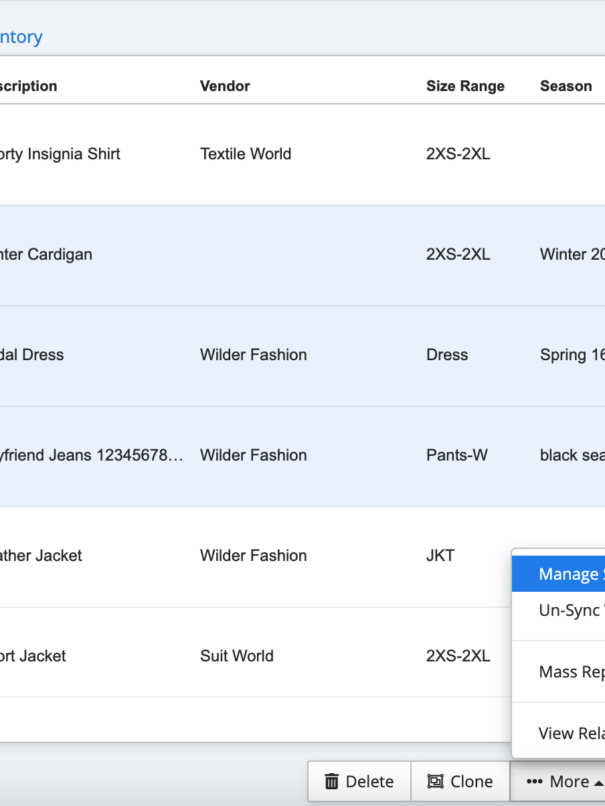The allure of the fashion industry, with its ever-evolving fashion trends, has always been its ability to capture the zeitgeist of an era, reflecting and shaping cultural trends with every season. Still, beneath the shimmering veneers of runway shows and glossy magazine spreads lies a pressing issue that threatens its very fabric: waste. As consumer awareness grows, the apparel industry is grappling with the complexities of its supply chain and the environmental impact it leaves behind.
The topics of increasing focus on sustainability and how to reduce waste have put the fashion industry under the microscope. The rapid cycle of trends, coupled with a global appetite for the new, has culminated in an environmental predicament that demands immediate attention. From overflowing landfills to the carbon footprint of production, the industry’s environmental impact is both vast and multifaceted.
However, in the face of these challenges, artificial intelligence (AI) emerges as a beacon of hope. The fusion of AI with traditional fashion practices promises a revolution that not only addresses waste but also redefines the very ethos of fashion. As we delve deeper into the current state of fashion waste generation and the transformative potential of AI, we embark on a journey of discovery.
This exploration is not just about informing but also sharing effective methods on how to reduce waste with the help of technology.

The Current State of Fashion Waste Generation
In the glamorous world of fashion, there’s an unglamorous side: waste. The rapid churn of trends and the insatiable appetite for new styles have led to an environmental crisis that’s impossible to ignore.
Fashion designers are now, more than ever, under pressure to consider sustainable materials and practices. But this begs the question, How to reduce waste while still delivering quality products on time?
A Deep Dive Into the Numbers
Each year, the apparel industry churns out a staggering 92 million tons of textile waste. To paint a vivid picture, imagine a garbage truck filled to the brim with discarded clothes being dumped every second. If we continue at this pace, we’re looking at a potential 134 million tons of waste by the end of this decade, leading to excess inventory and further waste.
Alarmingly, if the industry remains on its current trajectory without intervention, we could see a 50% spike in global emissions by 2030. Zooming in on the United States, the statistics are equally grim. The average American disposes of 81.5 lbs. of clothing annually, contributing to the 11.3 million tons of textile waste that finds its way to landfills.
The Environmental Toll
The fashion industry’s processes, particularly dyeing and finishing, are responsible for a whopping 20% of global wastewater. This not only contributes to 3% of global CO2 emissions but also plays a significant role in global water pollution.
The microplastic menace is another concern. Textiles, especially those crafted from nylon or polyester, release microplastics with every wash. These tiny pollutants, accounting for nearly 10% of the ocean’s microplastic contamination, are equivalent to over 50 billion plastic bottles annually.
From Linear to Circular: The Evolution of Waste Management
Historically, the fashion strategy was simple: produce, wear, discard. But as consumer awareness grows and the environmental stakes rise, there’s a palpable shift. The industry is now exploring AI-driven strategies, aiming to transform from a linear to a circular model.
These innovative approaches focus on optimizing production, predicting waste patterns, and enhancing recycling, heralding a new era of sustainable fashion.
Understanding Size Optimization in Fashion
At its heart, size optimization is more than just tailoring to measurements. It’s a deep dive into the intricate tapestry of human body types, aligning this understanding with the artistry of garment creation. This meticulous process refines garment dimensions, ensuring they resonate with the diverse physiques and preferences of the global target audience.
The implications for the apparel industry are profound in today’s world, where sustainability and customer satisfaction reign supreme and getting the size right is paramount. Every garment returned or discarded due to poor fit represents not just a wasted resource but a missed connection. By elevating size optimization, fashion companies are not only reducing waste; they’re enhancing the very essence of the shopping experience. It’s about ensuring every individual feels catered to, understood, and celebrated.
The Role of AI in Fashion Size Optimization
Combining AI with fashion size optimization is reshaping the industry. Gone are the days of broad demographics and generic size charts. With AI’s unparalleled data processing, we’re witnessing a shift toward precision and personalization. Advanced algorithms analyze vast datasets, from body measurements to consumer feedback, delivering size recommendations that feel almost bespoke. Virtual fitting rooms powered by AI offer a wide range of options tailored to individual needs, revolutionizing the shopping experience.
The benefits are manifold. For consumers, it reduces the often frustrating trial and error of finding that perfect fit. For brands, it offers the chance to anticipate demand more accurately, minimize the environmental impact of returns, and build customer loyalty.
In essence, AI isn’t just enhancing the size optimization process. It’s reimagining it and setting a new benchmark for fashion sustainability and customer engagement.

Benefits of AI-Driven Size Optimization in Fashion
In the intricate world of fashion, where every stitch and seam tells a story, the narrative of AI-driven size optimization is emerging as a transformative force. It’s not just about the perfect fit; it’s about redefining the very fabric of the industry. The benefits are manifold.
Resource efficiency shines as a beacon, with AI ensuring that every inch of fabric is utilized to its zenith, dramatically reducing waste. This precision in predicting sizes and tailoring needs means fewer off-cuts and a significant reduction in overproduction.
Then there’s the economic upswing. The ripple effects of accurate sizing are felt deeply in the industry’s coffers. Returns, often a significant drain on resources and profits, see a marked decrease. When a customer finds themselves draped in a garment that feels as if it was crafted just for them, their loyalty to the brand deepens, further amplifying economic gains.
But perhaps the most tangible benefit is the ‘Perfect Fit’. Beyond the numbers, beyond sustainability, is the simple, undeniable joy of wearing a garment that fits flawlessly. With AI-driven size optimization, the era of ‘almost right’ is fading. Consumers now experience clothing tailored to their unique contours, elevating their comfort and confidence.
Challenges in Implementing AI for Size Optimization in Fashion
The journey of integrating AI into fashion sizing is not without its challenges. At the heart of AI’s efficacy is its data. The quest for comprehensive and precise measurement of data is a complex one, and training AI models to grasp the nuances of fit and style adds another layer of intricacy.
And as AI begins to take center stage, the fashion industry faces a more existential question. The human touch, embodied by designers, tailors, and fit experts, finds itself at a crossroads. How does the industry strike a harmonious balance between the cutting-edge advancements of AI and the timeless artistry of human craftsmanship?
AI and Sustainability When It Comes to Fashion Practices
Peering into the fashion industry’s future, the silhouette of AI looms large and influential. AI isn’t just a tool; it’s set to become the steward of sustainable practices in fashion. Whether it’s optimizing resource use or predicting the next big trend with minimal waste, the possibilities with AI seem boundless.
For fashion brands, the writing on the wall is crystal clear: adapt or risk obsolescence. The road ahead demands investment—not just in technology and training but in a paradigm shift. A shift toward innovation, sustainability, and a future where AI and fashion walk hand in hand.
Conclusion
As we stand at this pivotal juncture, the role of AI in driving size optimization emerges as a beacon of hope, promising a future where fashion not only celebrates individuality but also protects the environment.
The challenges are real, and the path is laden with complexities, but the potential rewards—both for the planet and the industry—are monumental. For fashion brands, the choice is clear: harness the power of AI and lead the charge toward a more sustainable, inclusive, and efficient future. As consumers, designers, and stakeholders, it’s our collective call to action—to embrace this evolution and redefine the very essence of fashion for the betterment of all.







